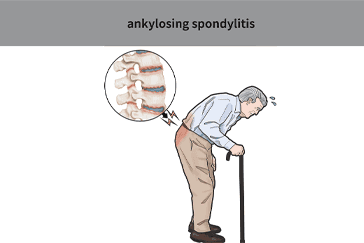
physiotherapy treatment for frozen shoulder

These Might be of Interest

what is frozen shoulder?
Many people nowadays have a common condition known as frozen shoulder. It is a medical condition that has its effect in the shoulder joint of a person resulting in stiffness and pain in the shoulder joints. The pain gradually worsens and then goes away on its own. However, the period of pain could be longer and it can take almost 3 years of frozen shoulder care to make it go away.
frozen shoulder symptoms
There are some main frozen shoulder symptoms that are very common. If someone sees these frozen shoulder symptoms then referring to the doctor is a must as this can become worse in the future. The most common symptoms of frozen shoulder include stiffness and pain in the shoulder joint. The person almost feels as if it is impossible to move the area.
If someone is suffering from a frozen shoulder, then there will be an achy pain in the shoulder. The shoulder muscles which are located on the top area of the arm will also feel the stress and pain.
Most people find it really difficult to sleep due to the pain. This could be another one of the signs of frozen shoulder.
frozen shoulder stages
There are three main stages that take effect in the body of a person suffering from a frozen shoulder.
Freezing Stage
- Pain starts to develop in the shoulder area.
- The pain worsens and it hurts at night.
- The period lasts for about 9 months at most.
- The movement of the shoulder is limited.
FROZEN STAGE
- The pain starts to get better, the stiffness worsens.
- Difficulty to move the shoulder.
- The period lasts for 12 months at most.
THAWING STAGE
- The motion range becomes normal.
- This period lasts for about 2 years at most.
frozen shoulder causes
The cause for frozen shoulder in some people is still not identified. However, there are certain groups that get affected by this condition the most.
Women are the most at risk when it comes to developing frozen shoulder.
The people who are in between the age group of 40 and 60 years can get this condition.
People who have just had some sort of surgery like mastectomy can be at risk as well
There are medical conditions that can be triggering factor. People with diabetes have a risk of getting a frozen shoulder. Also, thyroid, heart disease, or Parkinson’s can be some of the most common risk areas.
frozen shoulder diagnosis
For the diagnosis of frozen shoulder, the doctor prescribes a physical examination. The frozen shoulder test is recommended to see whether the movement of the shoulder hurts a lot or not. In the ‘Active’ exam part, the doctor will ask you to move the shoulder on your own. In the ‘Passive’ part of the exam, the doctor will help you move it.
The doctor might also decide to give an injection of anesthesia for the shoulder. This medication will help in numbing the pain in the shoulder. It helps the doctor in judging the active and the passive motion ranges.
The physical examination is often enough for the diagnosis of the condition. However, in certain cases, tests such as ultrasounds, X-rays, and MRIs are included for ruling out the other medical condition such as arthritis.
frozen shoulder treatment
For frozen shoulder treatment, there are many things that the doctors will try on you. Most doctors just recommend frozen shoulder exercises for the treatment of the condition. However, there are some other medical options available for the frozen shoulder treatment.
Non-Steroidal, Anti Inflammatory Drugs or NSAIDs such as ibuprofen and aspirin are some of the most common frozen shoulder remedies. In case these don’t work, a stronger dose of medication is prescribed.
Some cases of frozen shoulder treatment also include the frozen shoulder exercises. These frozen shoulder exercises help to stretch the muscles to improve the movement.
For more intense symptoms, the doctor advises these treatment options.
- A certain corticosteroid injection on the shoulder joint for reducing pain and improving motion.
- Joint distention– Injecting sterile water into the shoulder capsule for stretching it.
- Physical therapy– Frozen shoulder physiotherapy is also useful to provide relief from frozen shoulder.
- Surgery – is another one of the options that can be used as the cure for frozen shoulder. The doctors surgically insert tools that are the size of pencils in the shoulder cuts made by them.
how can we help?
We are one of the best medical health service providers that offer the cure and methods of frozen shoulder treatment. Even if you are not able to reach the hospital, we provide options for frozen shoulder physiotherapy at home. The doctors and physiotherapists at Portea are compassionate towards the patients and that is the reason we are the No. 1 choice for home treatment services.
With Portea, you’re not just getting a service ; you’re gaining a partner in your journey to recovery and well-being. We also offer a range of superior healthcare services, including doctor consultations, medical equipment, nursing home care, and dedicated caretakers. Rely on us for top-tier healthcare solutions tailored to your requirements.
meet our renowned physiotherapists for frozen shoulder
- Dr. A Franklin Rajkumar – BPT – 10 years Experience.
- Dr. Hari Prasad M – MPT – 4 YEARS Experience.
- Dr. Praveen kumar reddy v – BPT- 7 years experiences.
- Dr.Ganta Aravind – BPT – 7 years experiences.
faqs
Which exercise helps frozen shoulder?
Perform the Rock the Baby shoulder exercise by gently swaying your arm side to side, like rocking a baby. It enhances shoulder mobility. Aim for 20 repetitions, 3 sets, twice daily.
What actions to steer clear of with a frozen shoulder?
Avoid sleeping on the affected shoulder if you favor side sleeping. Instead, cushion your affected arm across your chest as if embracing it. Maintain good posture while standing or sitting by keeping your shoulders back, minimizing slouching or slumping to alleviate discomfort.
Is applying ice beneficial for frozen shoulder?
Apply ice to the affected area for 15 minutes, followed by a 15-minute break, repeated three or four times daily for several days. Always use a cloth to wrap the ice to prevent frostbite. Consider taking ibuprofen to alleviate pain and swelling. Gradually resume your normal activities as pain diminishes.
Are there any specific precautions to follow during physiotherapy for frozen shoulder?
It’s essential to perform exercises within recommended limits and avoid overexertion or movements causing excessive pain. Follow the physiotherapist’s guidance diligently.
What are the steps for massaging a frozen shoulder?
Instructions for a Frozen Shoulder Massage or Stretching. Initiate the process by employing a foam roller. Position it under the armpit of the affected arm, lean on a table or counter, and extend your arm outward, simulating a reach. Gradually roll back and forth to relax the shoulder muscles.
References
Doctor Consultation
Nursing
Physiotherapy
Trained Attendant
Elder Care
Mother & Baby Care
Lab Tests
Medical Equipment
Speciality Pharma
Critical Care











